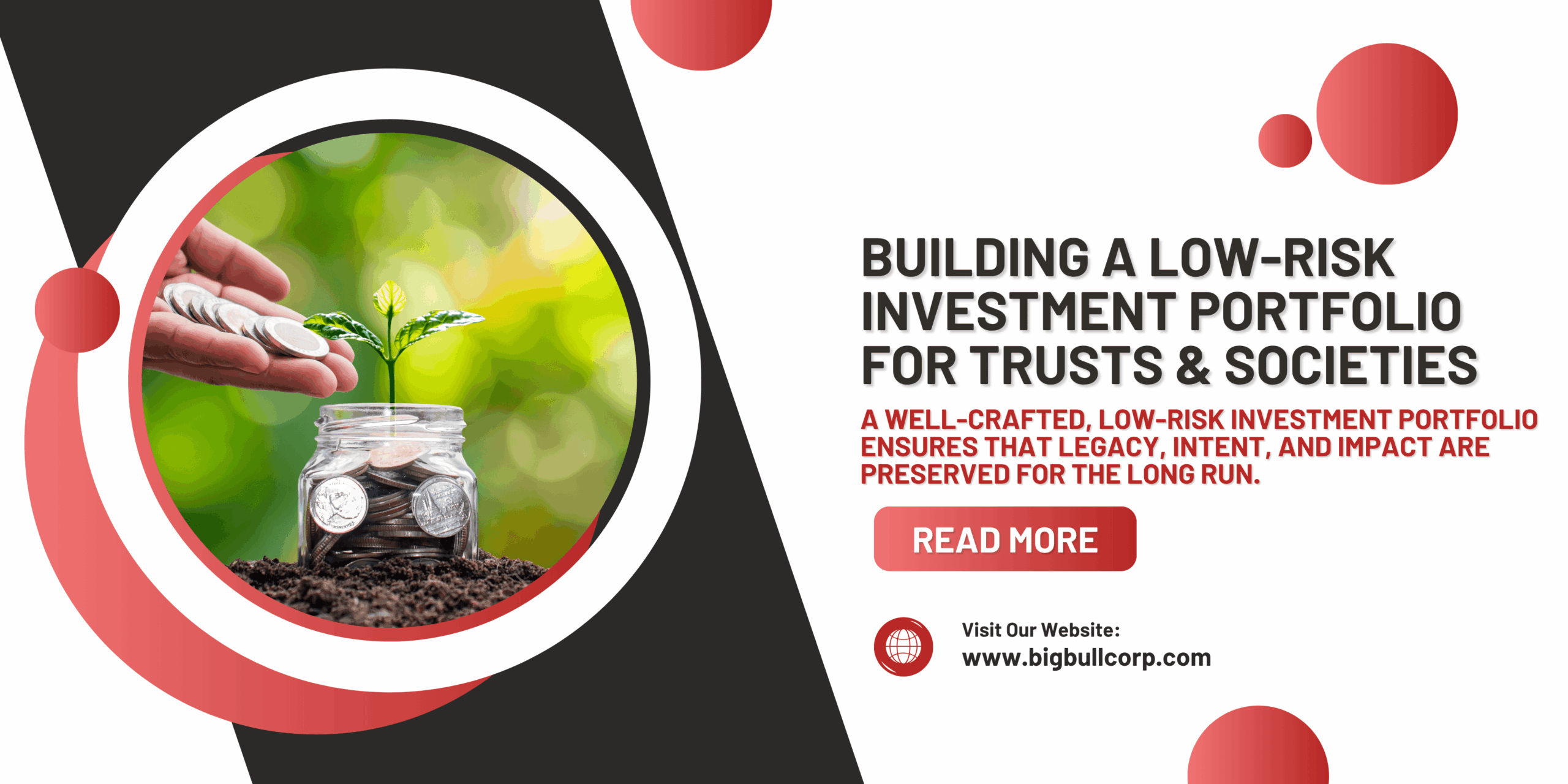Balancing Responsibility, Stability, and Stewardship
Managing the finances of a trust or society is a significant responsibility. These entities are often custodians of public or donor funds, expected to preserve capital while ensuring consistent returns to meet their objectives—be it educational, religious, philanthropic, or social.
A low-risk investment portfolio is not just a preference for such institutions—it’s often a mandate. Here’s how to approach building one that aligns with the fiduciary duties and long-term vision of a trust or society.
1. Start with a Clear Investment Policy Statement (IPS)
An IPS acts as the guiding document for all investment decisions. For trusts and societies, it should include:
- Objectives (preservation of capital, income generation, inflation protection)
- Risk tolerance
- Time horizon
- Liquidity needs
- Regulatory or tax considerations
This provides clarity and governance, reducing the risk of ad-hoc or emotion-driven decisions.
2. Prioritize Capital Protection
The first rule for most institutional funds: don’t lose money. Safety of capital is paramount, especially when funds are earmarked for charitable activities, scholarships, or operational expenses.
Ideal instruments:
- Government bonds
- Bank fixed deposits (with high-credit institutions)
- PSU bonds
- RBI Bonds (floating rate savings bonds)
3. Ensure Liquidity and Predictability
Trusts often have predictable outflows—like salaries, scholarships, or maintenance costs. This requires investments that offer:
- Stable income (monthly/quarterly interest or dividends)
- High liquidity (easy redemption or sale)
Options include:
- Short-duration debt mutual funds
- Laddered fixed deposits
- Liquid funds (for surplus cash parking)
4. Diversify Without Overcomplicating
Diversification should not mean scattering funds across too many instruments. The goal is to balance safety and returns while keeping operations manageable.
A sample asset allocation:
- 40% in fixed deposits
- 30% in government and PSU bonds
- 20% in short-duration debt funds
- 10% in gold or sovereign gold bonds (for inflation hedge)
Avoid high-volatility assets like small-cap equities or sectoral mutual funds unless specifically earmarked for long-term corpus building.
5. Tax-Efficient Planning
Certain trusts and societies have tax exemptions under Section 12A/80G. However, investment income must still be managed smartly:
- Opt for tax-free bonds (if eligible)
- Use dividend plans cautiously due to TDS implications
- Consult with a tax advisor to avoid non-compliance
6. Stay Compliant and Transparent
All investments should be:
- Fully documented
- Approved by the board or governing body
- Aligned with the entity’s MoA and compliance requirements
Regular reviews and audits help maintain transparency with stakeholders and regulators.
7. Seek Expert Advisory
Trusts and societies must resist the lure of “tips” or unverified advice. A qualified advisor helps:
- Build a compliant, low-risk portfolio
- Rebalance when necessary
- Ensure that investment aligns with purpose, not just profit
This is where the real value of experienced financial guidance comes in.
Final Thought
For trustees and office bearers, the goal is not just to grow capital—it is to be a responsible steward of community resources. A well-crafted, low-risk investment portfolio ensures that legacy, intent, and impact are preserved for the long run.

